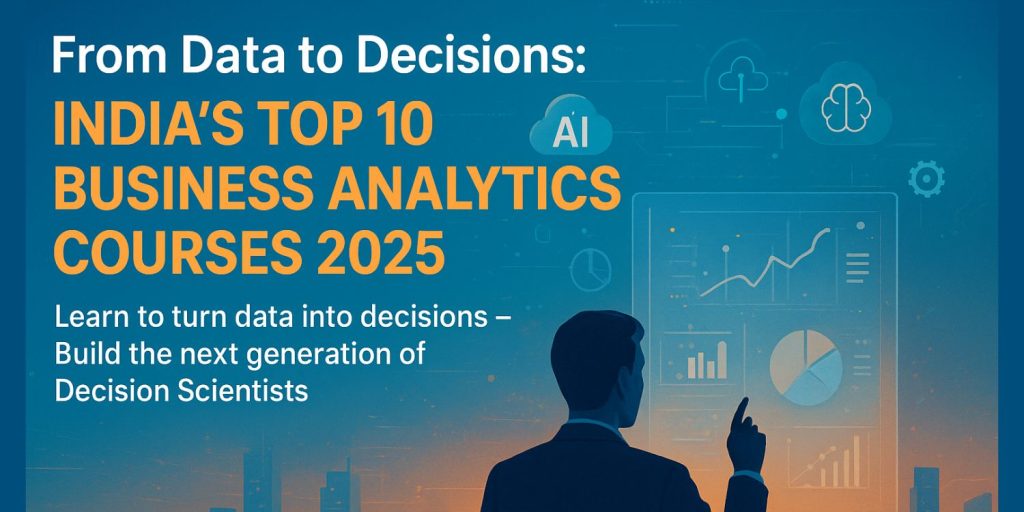The last decade turned “business analytics” into a household phrase; the next will decide whether analytics education can consistently produce decision-makers, not just dashboard builders. As India’s AI investments accelerate and every sector drowns in telemetry, logs, and customer exhaust, the differentiator is no longer access to tools but the ability to reason under uncertainty, translate models into choices, and own outcomes end-to-end. This issue, spotlighting India’s Best 10 Business Analytics Course Providers 2025, is a call to reframe the goal: from teaching analytics to building decision scientists.
Decision scientists sit at the intersection of data, domain, and decision rights. They design the question before they design the model; they negotiate trade-offs, quantify risk, and encode constraints; they influence stakeholders and measure counterfactuals. That arc, from problem framing to post-deployment governance, is still the thinnest slice in most curricula, even as enterprises demand it most. Recruiters repeatedly prize graduates who can scope an experiment, defend a metric, and say “no” to spurious lift, because that is where value is created or destroyed.
What should change? First, curriculum has to tilt from “tool tourism” to durable mental models. Statistics as a language for causality and uncertainty; experimentation as a habit; optimization and simulation as operational levers; data engineering basics to respect constraints of scale and latency; and ethics, privacy, and policy as first-class design inputs. Second, pedagogy must simulate the mess of reality: ambiguous data, moving baselines, delayed labels, PII constraints, and the politics of adoption. Capstones that bind product, operations, and finance, scored on impact, not presentation gloss, will do more than a dozen isolated caselets.
Third, industry integration needs teeth. Advisory boards should shape quarterly curriculum updates tied to stack shifts; partnerships must provide living datasets, not sanitized samples; apprenticeships should rotate learners through analytics, product, and GTM so they internalize how decisions travel. Finally, outcomes must be audited with integrity, tracking not just CTC, but role progression, scope of decisions owned, and measurable business impact within 12–18 months of graduation.
The institutions featured in this issue signal that pivot. They emphasize framing before forecasting, experimentation before evangelism, and responsible deployment before scale. They treat Python and SQL as instruments, not identities; they assess learners on clarity of assumptions and rigor of post-mortems; they teach that the best model is often a cheaper query plus a better question. In a market enamored with model complexity, they reward simplicity that ships.
India’s analytics edge will not be determined by who teaches the latest library first, but by who graduates professionals capable of turning imperfect data into defensible decisions. If programs can consistently cultivate that craft, rooted in statistics, tempered by domain, and accountable to outcomes then “business analytics” will graduate from a skill set to a leadership pipeline. That is the bar this list encourages and the promise India’s AI economy urgently needs.
